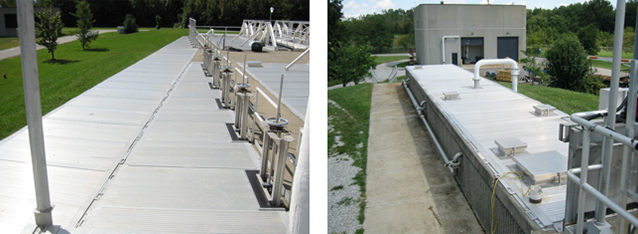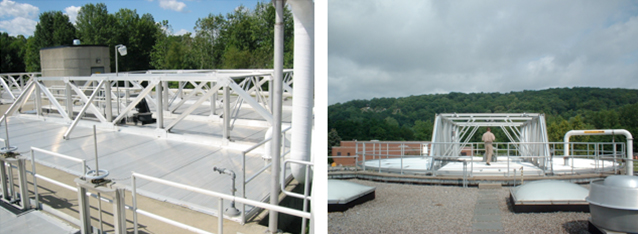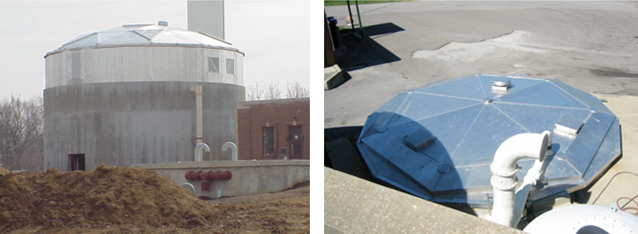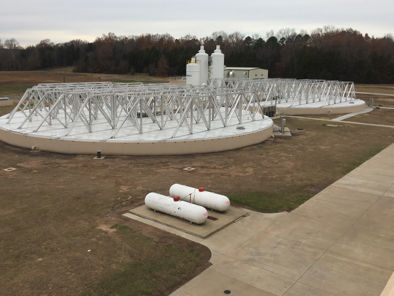Covers and Enclosures
Odor control often requires the use of covers or enclosures to collect and contain the odors prior to treatment and dispersion. The major objectives of good containment design include:
- Prevent escape of odorous gasses to atmosphere
- Minimize volumes of odorous air to be treated
- Allow for reasonable access to covered processes for inspection and maintenance
- Ensure worker safety
Alternative containment designs include:
- Flat extruded or formed-panel covers
- Flat extruded or formed-panel covers with external truss reinforcement
- Geodesic domes
- Low-profile domes
- Equipment enclosures
Covers Types
Extruded and formed-panel covers are generally used for relatively spans up to 20 feet wide such as grit chambers and miscellaneous channels but can also be used to cover large tanks if there are intermediate supports. Flat covers are typically constructed from corrosion resistant aluminum or fiberglass. Flat covers may be used on longer spans with the addition of external truss systems for structural support.
Flat covers minimize the volume of air to be treated, reducing the size and cost of odor control systems. They are generally used where routine access to the process is not required, although hatches should be provided for regular inspection and maintenance.
Aluminum geodesic domes are commonly used to cover large circular tanks. Fiberglass domes are also available for circular tanks but are normally used on the smaller diameter tanks. Domes can be equipped with doors and hatches to provide for routine entry for inspection and maintenance.
Aluminum, fiberglass, and concrete are the most common materials used for dome construction. Fiberglass can be molded into a myriad of configurations, and is typically used to construct low-profile domes. These enclosures are only slightly domed to minimize air volumes to be treated. They are normally used in applications where routine entry is not required, with hatches employed for inspection and maintenance.
Examples of flat aluminum panel covers

Examples of flat aluminum panel covers with external truss supports

Examples of aluminum dome covers

Applicable Treatment Processes:
All odorous liquid treatment plant processes, pump stations, sludge processing and storage.
Major Design Considerations:
Access to process
Flat panel designs may be used where routine access is not required. Domes may be used to provide for improved access to the process.
Air treatment volumes
Required ventilation rates from within covered structures will depend on several factors including:
- Material being stored in the tank
- Occupancy requirements
- National Fire Protection Association (NFPA) guidelines
- Corrosion potential
- Air-tightness of cover
Materials
Material selection should be based on cost, structural qualities, and durability.

